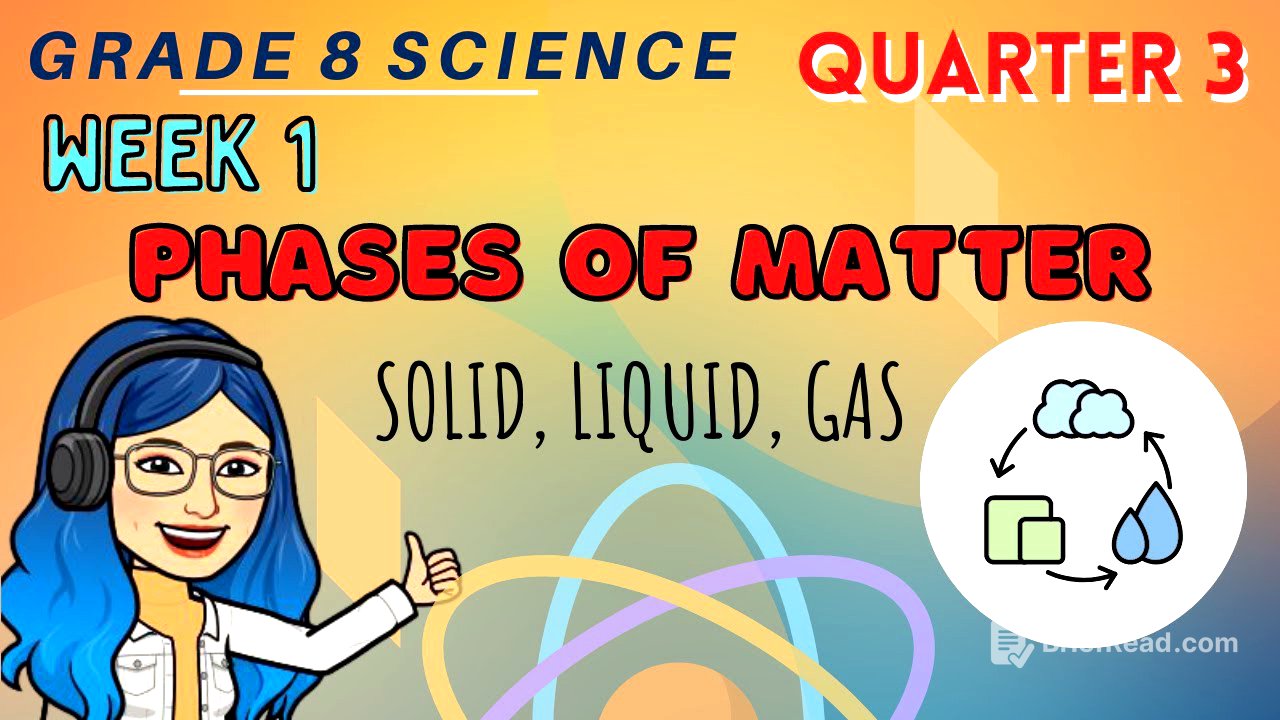TLDR;
This video explains the properties of matter, classifying it into solids, liquids, and gases based on the particle nature of matter. It defines matter as anything with mass and volume, and differentiates between matter and energy. The lesson further describes the characteristics of solids (definite shape and volume), liquids (definite volume, takes the shape of its container), and gases (no definite shape or volume), explaining the behavior of their particles.
- Matter has mass and volume.
- Matter exists in three states: solid, liquid, and gas.
- The states of matter are determined by the arrangement and movement of their particles.
Introduction [0:00]
The lesson introduces the topic of the properties of matter, focusing on solids, liquids, and gases. The goal is to explain these properties based on the particle nature of matter. The video promises a magical journey through understanding elements, compounds, and mixtures.
What is Matter? [1:07]
Matter is defined as anything that has mass and volume, and occupies space. Volume is the measure of the space occupied by an object, while mass refers to the amount of material in a body. Examples such as a wallet, tree, water vapor, vinegar and smoke are identified as matter, while heat and light are not, because they are forms of energy and do not occupy space or have mass.
Classification of Matter: Solid [4:31]
Solids are defined as having a definite shape and volume. The particles in a solid are very close together, with strong forces between them, allowing only vibration. This arrangement gives solids a stable, definite shape and volume, which means they do not take the shape of their container.
Classification of Matter: Liquid [5:38]
Liquids have a definite volume but take the shape of their container. The particles in liquids move fast enough to overcome some of the attraction between them, allowing them to slide past each other. While liquids change shape, they do not easily change volume.
Classification of Matter: Gas [6:54]
Gases have no definite shape or volume. The particles of a gas move very quickly and can break away completely from one another. The attraction between gas particles is less than in solids or liquids, and the position of the empty space between the particles is not fixed. As a gas fills a container, the space between its particles increases.
Particle Nature of Matter [8:20]
Matter, whether solid, liquid, or gas, is made up of particles in constant random motion, held together by attractive forces. These tiny particles are known as atoms. The particles of matter are always moving, and there are spaces between them.
Summary of Observations [9:17]
The key observations about matter are that it is made up of tiny particles, these particles are always moving, there are spaces between the particles, and the particles attract each other. Matter is almost everywhere and can be identified as solid, liquid, or gas.









